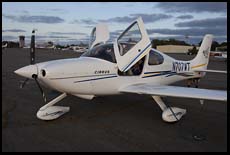

|
Cirrus Flight Reviewa BFR and IPC for the SR20 or SR22; by Philip Greenspun, ATP-CFII in August 2010 |
This describes a flight review for an Cirrus SR20 or SR22. By the end of this review, the pilot will have passed a biennial flight review (BFR) and an instrument proficiency check (IPC). The review is designed for an Avidyne-equipped SR20, but can be adapted for other configurations.